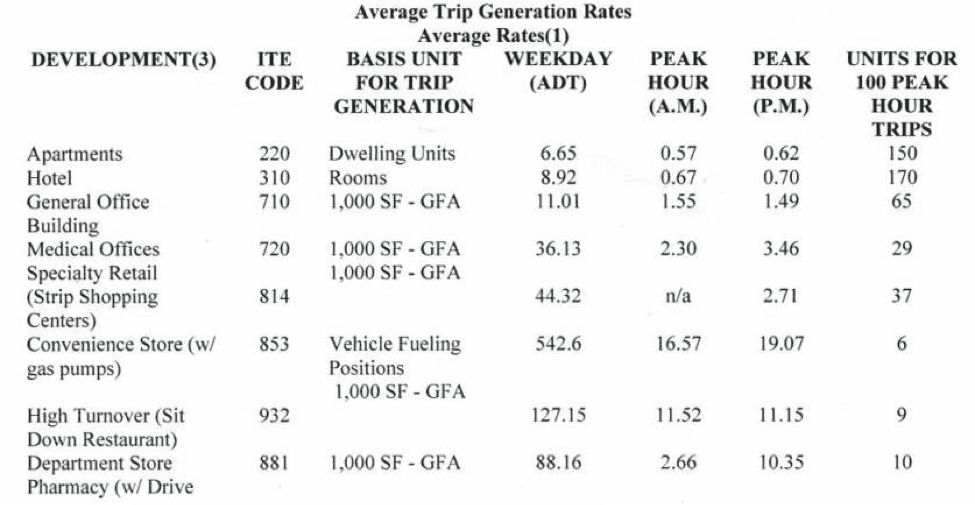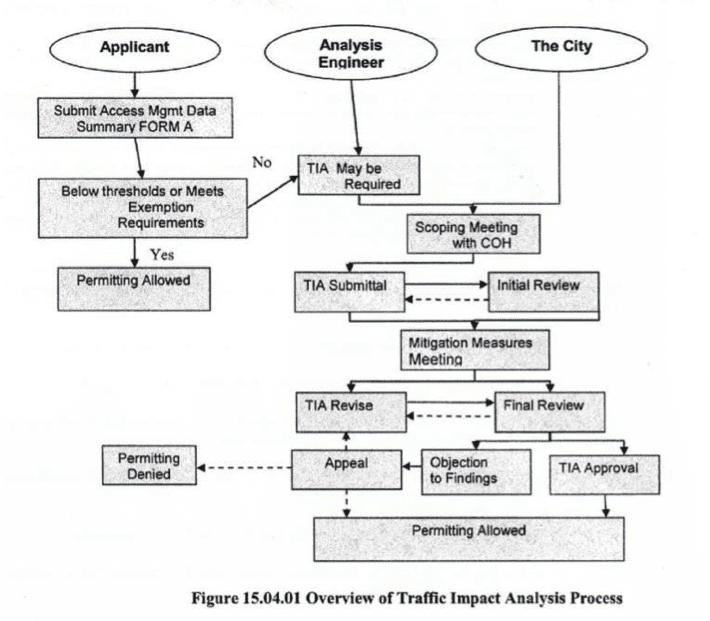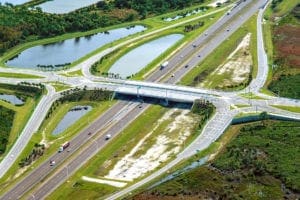
What Exactly is Alternative Delivery?
Alternative delivery maximizes the positive outcomes of a project and provides the greatest value and benefit to the owner and their customers.
Learn from award-winning professionals — explore our whitepapers, blogs, and the latest industry updates.
Join our dynamic organization of engineers, land surveyors, landscape architects, environmental scientists, and architects!
Talk to a market leader today! We’ll answer any questions you have about our professional services.

While today’s Houston hasn’t quite reached the level of traffic notoriety as some of its metropolitan peers (we’re looking at you, Austin), most Houstonians know the impact that traffic has on their lives. Armed with audio books and caffeine beverages crafted by their neighborhood barista, they navigate their way through the city in dimly lit mornings with the navigational savviness of your favorite smartphone app.
The City of Houston has policies in place to manage adverse impacts of such traffic on the city, and during the nascent stages of planning and development, a required step for the proposal of a development is the submittal of Form A (click for link).
A Traffic Impact Analysis (TIA) shortly follows on the heels of the Form A’s submittal whenever a proposed development generates 100 or more new peak hour trips and is used to evaluate the overall impact of the development on bordering facilities.
However, in order to determine the scope of the study, a preliminary meeting is coordinated and scheduled with the relevant county’s Traffic and Transportation Group. Such a meeting establishes the guidelines that the TIA must meet and typically relays information regarding its content, exhibits, magnitude of details and format requirements. During the meeting, any deviations from the county’s Design and Development Guidelines are communicated, and any variances from the requirements outlined during the meeting must be approved in writing.
A project can be significantly impacted if it is determined that the existing transportation infrastructure cannot support the proposed development. The city will either expect the developer to burden the cost for the roadway improvements to support the proposed development or share the cost of these improvements if it benefits the city as well.
TIA’s provide large amounts of information that can be used for any number of purposes ranging from documenting the growth of an area to assisting with planning activities and determining the immediate and long-term needs relative to infrastructure improvements. Their primary purpose, however, is to maximize the efficiency and safety associated with ingress and egress facilities. The analysis is chiefly aimed at peak hours during mornings and evenings.
To get an idea of just how the analysis is performed, please see the chart below. The chart conditions are generic, however, for all intents and purposes the table provides general blueprint for how traffic impact calculations are performed. Pay close attention the Peak Hour Column for both A.M. and P.M. They will occupy the bulk of our concern in our calculations.

Let’s say, for example, we are dealing with a proposed development of Multi-Family Apartments with 197 units. In order to find identify whether the number of trips would exceed the 100 peak hour that would warrant a TIA, we perform the following calculation:
197 units x 0.57 (AM Peak Ratio) = 112 Trips
197 units x 0.62 (PM Peak Ratio) = 122 Trips
Both cases would merit a TIA. In some cases, even when the calculations hover just below or around 100, the city will still require the execution of a TIA.
The flow chart below illustrates the application process involving Traffic Impact Analysis:

Civil engineering and site development permitting is the critical path for the success of your development project. Our team has market-leading experience in the successful delivery of hundreds of land development projects throughout Houston.

WGI is a national design and professional services firm leading in technology-based solutions for the construction of public infrastructure and real estate development. At WGI, we’re providing Tomorrow’s Infrastructure Solutions Today.

Alternative delivery maximizes the positive outcomes of a project and provides the greatest value and benefit to the owner and their customers.

At WGI, we’ll help your community develop integrated micromobility plans and policies to capture benefits, limit risks and expand choices. From pilot project design to overall mobility planning, we can help you test, scale and incorporate innovative transportation into your community plans.

WGI is pleased to welcome five new hires in our San Antonio, Austin, Houston, Dallas, and Jacksonville offices.

WGI has been in overdrive for the first three quarters of 2019, exceeding 2018 in the expansion of its employees, services, clients, and geographic footprint.

WGI received the Best in Construction in the category Design-Build Award for collaboration on the I-95 Diverging Diamond Interchange at St. Johns Heritage Parkway project in Brevard County, District 5.

Gain valuable insight into the complexities of Street Impact Fees (SIF) for single-family, multi-family, and commercial uses directly from WGI’s industry-leading experts.
You’ve been searching for a place like WGI. We look forward to meeting you soon.
Sign up to receive emails to hear our latest news and achievements in our monthly newsletter.
Enter your zip code, and we’ll personalize your experience with local projects, office locations, team members, and more.
WGI supports its associates with meaningful opportunities for growth, strong benefits and perks, while we work collaboratively with clients and co-consultants to shape and improve communities.






WGI is a dynamic organization with opportunities nationwide for engineers, land surveyors, landscape architects, environmental scientists, and architects.